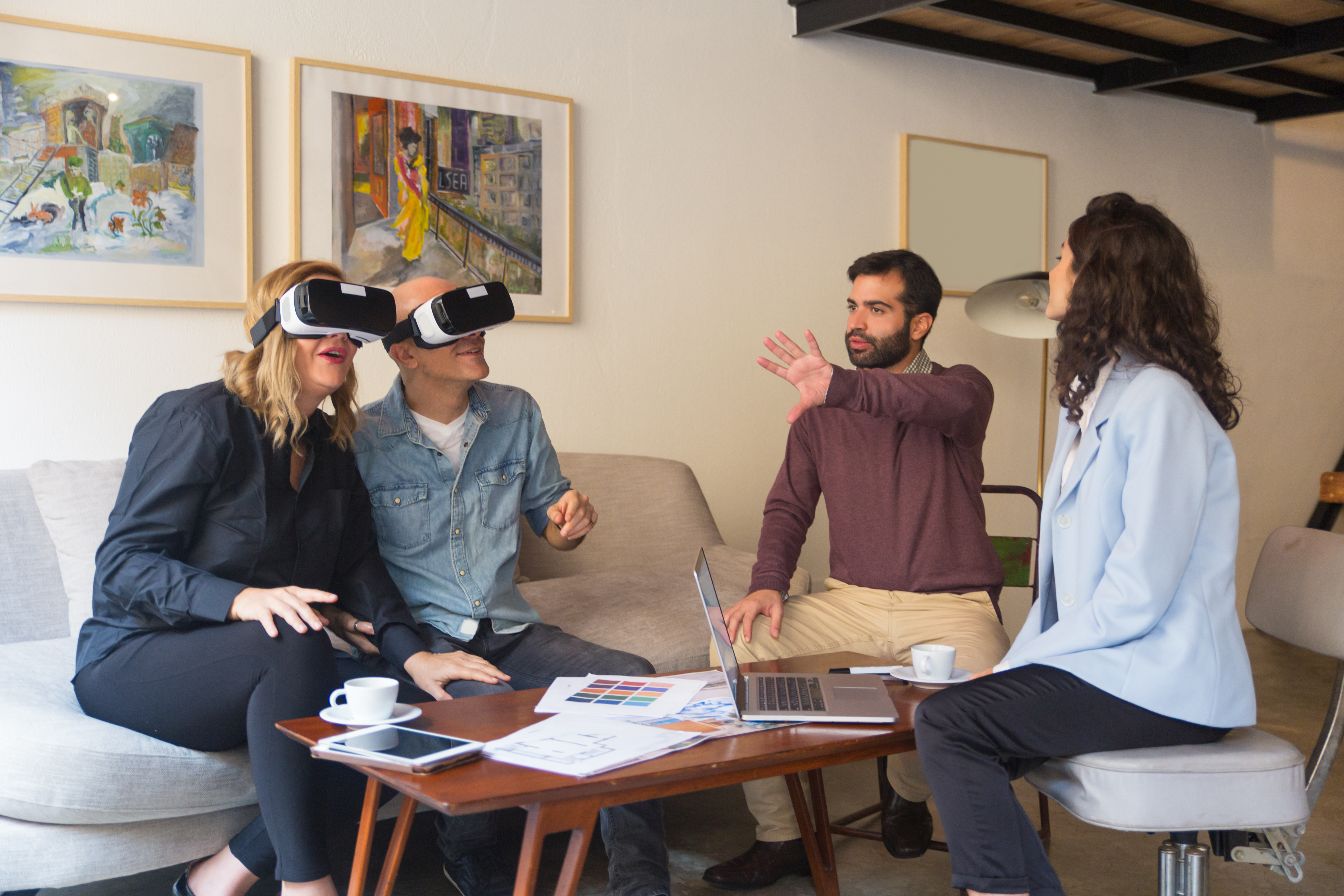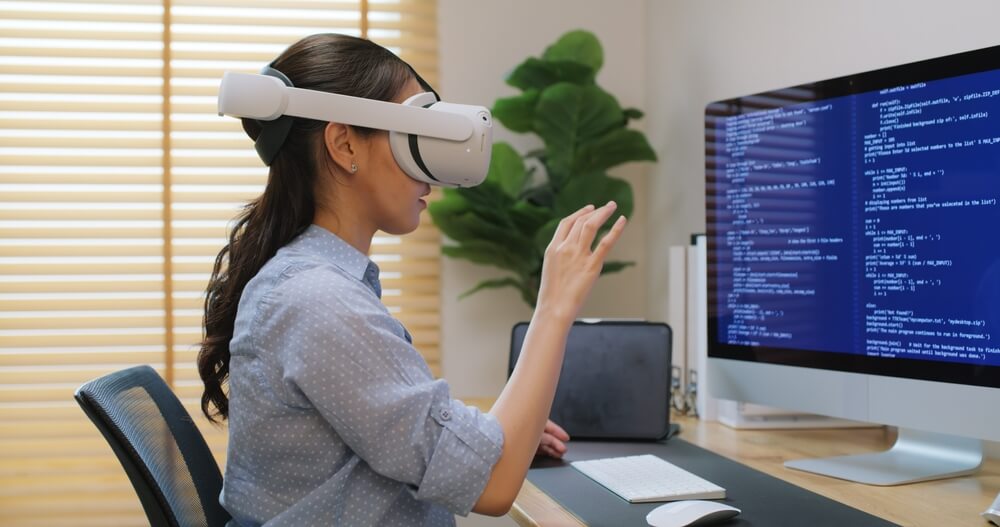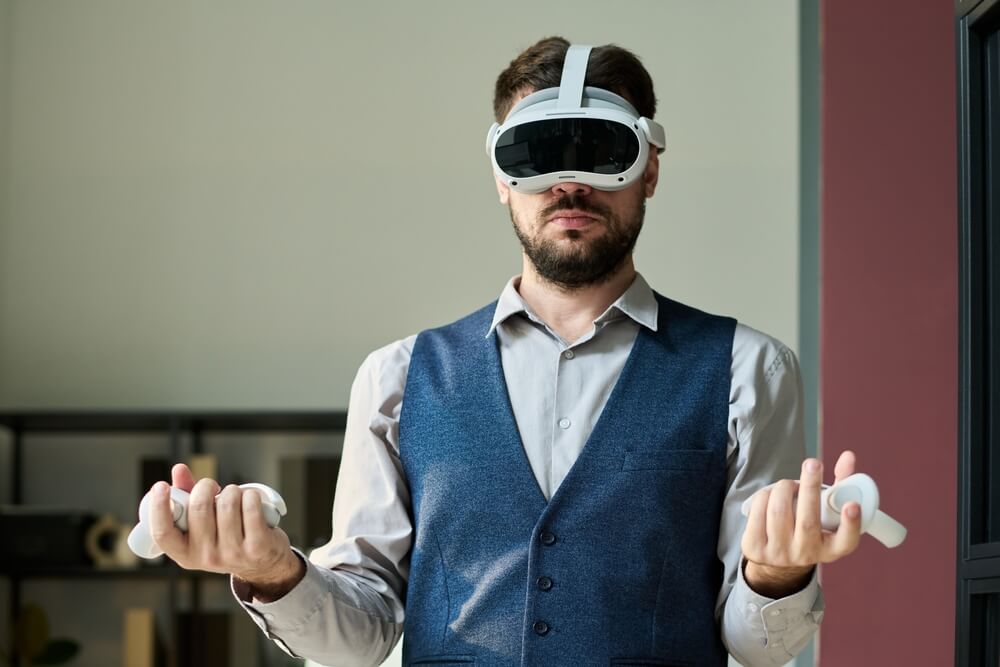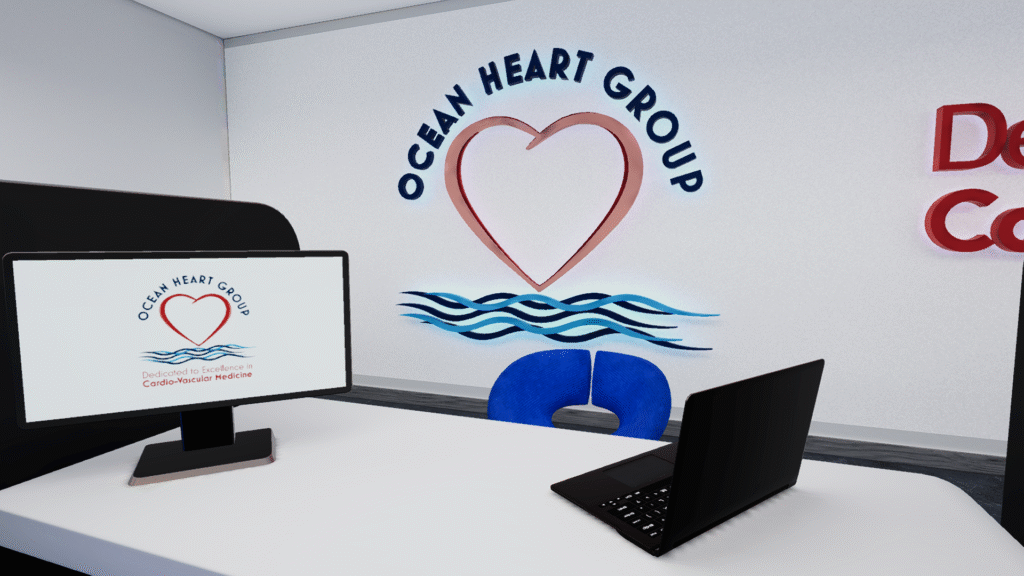Virtual Reality Team Building
Table of Contents:
Virtual reality opens a plethora of opportunities for team building. Firstly, it lets you participate in games that wouldn’t be possible in real life; secondly, it lets teams bond even if they work remotely or are located all over the world. In this article, we shall examine this topic further. We invite you to read on.
What Is Virtual Reality (VR) Team Building?
VR team building refers to the act of doing team-building activities in a virtual environment. It can refer to team integrations that are both fully digital or phygital. You can use it both to improve the relationship between remote employees and to enhance the traditional team-building experience.
We must mention here that virtual reality team building does not refer purely to large corporate events. Even a digital meeting during a coffee break can do the trick, letting your team bond while not taking too much time off the schedule.
How VR Team Building Helps Remote Teams Stay Connected
With more companies adopting remote or hybrid work models, maintaining a sense of community and connection within teams has become a growing challenge. Virtual reality offers an innovative solution to this issue by allowing remote teams to participate in shared, immersive experiences that bridge the gap between distance and isolation. VR helps recreate the dynamics of in-person interactions, allowing employees to engage with one another in a virtual space where they can interact, collaborate, and have fun—just like in a physical office setting. This fosters a sense of belonging and helps remote employees feel more engaged with their colleagues and the company culture, regardless of where they are located.
VR Team Building Activities – Examples
Having explained what virtual reality team building is, let us look at a few examples of such activities. What forms can it take?
- VR coffee breaks – to offer your employees an office-like experience without the need to commute or the traditional office hassle.
- Team quizzes – for your team to bond while having fun together.
- VR training – you might also organize training in VR, allowing your employees to bond during them.
- VR team-building games – this includes large, lengthy games that resemble traditional team-building trips.
Why Does VR Team Building Matter?
The case with team-building activities in VR is simple – employees need to build relationships and trust to cooperate more effectively. Achieving this became much more difficult since the popularization of remote work. VR team building is an answer to this problem.
With just a few headsets, you can organize a great team-building event without the need for all your employees to travel to a particular location. As a result, it becomes significantly easier to maintain a good atmosphere in your company, even if your team members are scattered all over the country or world.
The Science Behind Team Building and Trust
Building trust and relationships is the cornerstone of any successful team, and these elements are often best developed through shared experiences. In traditional team-building exercises, employees engage in activities designed to foster communication, collaboration, and problem-solving. The immersive nature of VR accelerates this process by simulating real-world challenges and opportunities for teamwork. In VR, employees can experience high-pressure situations, solve problems together, and collaborate without the distractions of their physical surroundings, leading to more effective trust-building and communication in a relatively short period of time.
Virtual Reality for Team-Building Events: the Benefits
What are the advantages of VR team-building activities? We’ve prepared a short list of the most important ones!
Cost-Efficiency
Ordering a virtual headset for each of your employees is still less expensive than organizing a whole trip. Thus, using VR helps you cut costs while still building good relationships between your team members.
| TIP: Do not give up on team-building trips completely. They are a different type of experience, so you should try to organize them from time to time. |
Convenience
A team-building activity that is inconvenient for your employees is one that they won’t be fully engaged in. By using virtual reality for this, you eliminate one of the most common sources of inconveniences: the location. After all, your employees can access the virtual world from anywhere they want.
Immersion and Fun
VR team-building activities will probably be something completely new for your employees. This means that they will have much more fun exploring the virtual world. What’s more, due to the use of this technology, the experience will be significantly more immersive than a traditional team-building event.
VR Team Building for Leadership Development
Leadership development is one of the most critical aspects of team-building, and VR offers a unique opportunity to nurture leadership skills in a safe, controlled environment. VR simulations can place employees in leadership roles, allowing them to practice decision-making, crisis management, and team coordination in high-pressure situations. Whether it’s leading a project, managing a difficult team dynamic, or navigating a corporate crisis, VR provides a realistic setting where aspiring leaders can test their skills and gain valuable experience. By using VR to simulate leadership challenges, companies can identify and develop future leaders in a way that traditional training methods may not allow.
The Takeaway
Virtual reality is revolutionizing the way companies approach team building, offering innovative solutions to the challenges posed by remote and hybrid work environments. By creating immersive and engaging experiences, VR allows teams to bond, collaborate, and develop critical skills without the need for physical presence. The cost-efficiency, convenience, and fun factor of VR team-building activities make them an attractive option for businesses looking to maintain strong connections among employees, no matter their location. Moreover, VR is not just limited to social bonding—it’s also a powerful tool for developing leadership skills and improving communication and trust. As technology continues to evolve, the potential for VR team building will only expand, positioning it as an essential component of modern workplace culture. By embracing VR now, companies can stay ahead of the curve, enhance team dynamics, and foster a more collaborative and innovative workforce.
You might also read: Breaking Barriers: How Virtual Reality is Reshaping Training Across Industries
What is Virtual Reality (VR) team building?
VR team building refers to conducting team-building activities in a virtual environment, which can be either fully digital or phygital (a combination of physical and virtual elements). It helps teams, especially remote ones, bond, communicate, and collaborate effectively without the need for physical presence.
How does VR team building help remote teams stay connected?
VR team building allows remote teams to participate in shared, immersive experiences, bridging the gap between distance and isolation. It helps recreate in-person dynamics, fostering a sense of connection, collaboration, and engagement, ensuring employees feel involved in the company culture, regardless of their location.
What are some examples of VR team building activities?
VR team building activities can include:
- **VR coffee breaks**: Offering a relaxed, office-like experience without commuting.
- **Team quizzes**: Fun, competitive activities that foster collaboration.
- **VR training**: Learning new skills together through immersive simulations.
- **VR team-building games**: Large, interactive games that simulate team-building trips.
Why does VR team building matter?
As remote work becomes more popular, building trust and relationships within teams has become more difficult. VR team building addresses this challenge by allowing teams to bond, communicate, and collaborate, no matter where they are. With VR, team-building activities can be easily organized without requiring travel, making it easier to maintain a positive company atmosphere.
What are the main benefits of VR team building?
Some of the primary benefits of VR team building include:
- **Cost-efficiency**: VR reduces the costs associated with traditional team-building trips while still providing an engaging experience.
- **Convenience**: Employees can participate from anywhere, eliminating location-based inconveniences.
- **Immersion and fun**: VR provides a unique, engaging experience that is far more immersive than traditional team-building activities.
How can VR team building help with leadership development?
VR team building can be a valuable tool for leadership development. By simulating high-pressure situations, VR allows employees to practice decision-making, crisis management, and team coordination in a realistic virtual environment. This helps develop leadership skills in a safe, controlled space and prepares employees for real-world leadership challenges.
What is the future of VR team building?
The future of VR in team building is incredibly promising. As technology evolves, VR team-building activities will become even more personalized, immersive, and engaging. With advancements in AI-driven simulations, real-time feedback, and haptic feedback, VR will continue to enhance employee collaboration, leadership development, and overall team dynamics.

Author: Rafał Siejca
Rafal has over twenty years of corporate experience, including roles at Millennium Bank, Comarch, and leading software teams at PZU, one of Europe’s largest insurance companies. As one of Poland’s few true VR experts with a decade of experience, he ensures timely, high-quality project delivery as CEO and CTO.










